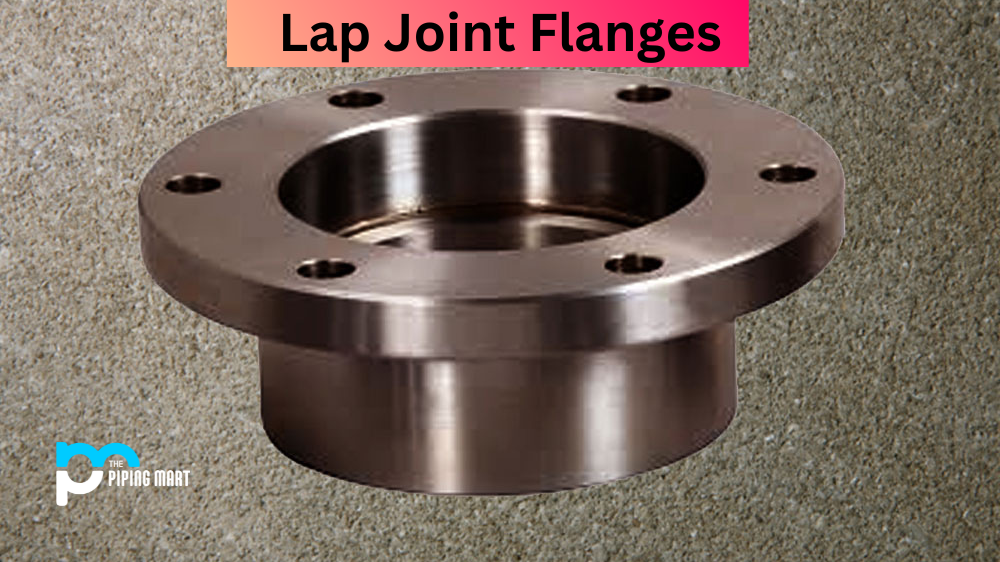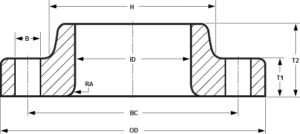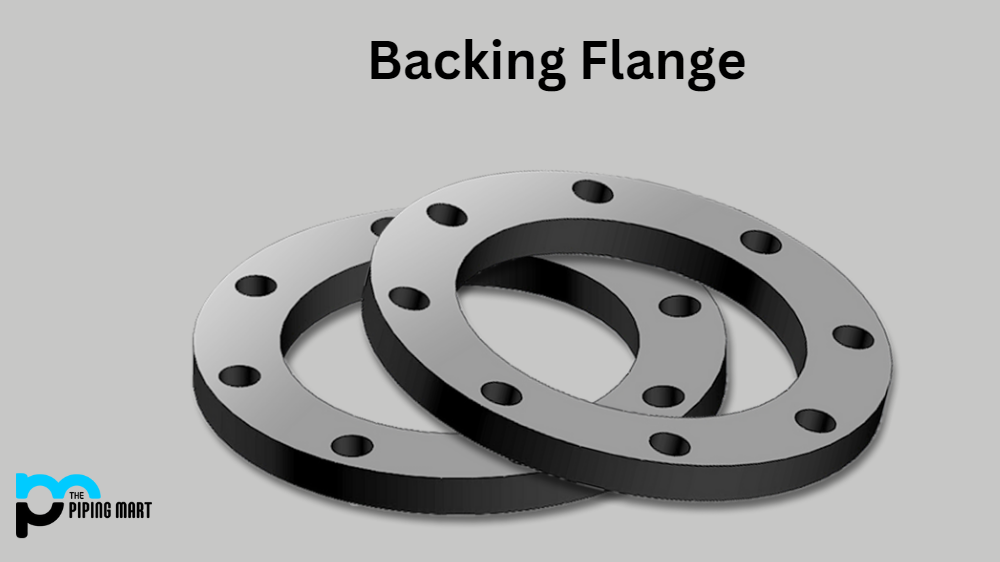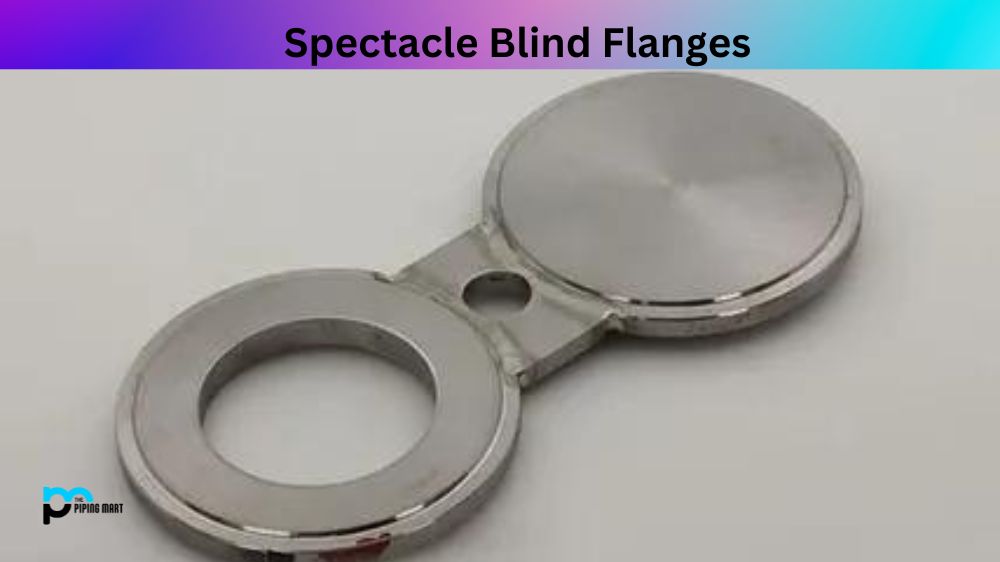Lap joint flanges are a type of pipe fitting used in various industries and applications. They are designed to provide a secure connection between two pipes, allowing for the easy exchange of fluids or gases. They come in a variety of materials and sizes, so it’s important to understand the different types available before making your selection. Let’s take a look at what lap joint flanges are, their uses, and how they’re welded together.
What is Lap Joint Flange?
A lap joint flange is a vital component in industrial piping systems that connect two pipes. It comprises two parts: a stub end and a backing flange. The stub end is welded to one of the pipes, while the backing flange sits behind it without welding. This setup enables easy alignment and disassembly when needed. Lap joint flanges are preferred in industries like oil and gas, chemicals, and water treatment for their versatility and straightforward installation, making them ideal for applications requiring frequent adjustments or modifications.
Lap Joint Flange Uses
Lap joint flanges are used to connect two pipes when the one-way flow is desired. This makes them ideal for applications where pressure is not an issue, such as HVAC systems or plumbing. They can also be used in oil and gas pipelines, water filtration systems, and agricultural irrigation systems. Additionally, they can be found in medical equipment like dialysis machines or MRI machines.
Lap Joint Flange Welding
When welding lap joint flanges together, it’s important to use the correct type of welding process depending on the material being used. For example, stainless steel lap joint flanges should be welded with shielded metal arc welding (SMAW) or flux-cored arc welding (FCAW). Carbon steel lap joints should be welded with gas metal arc welding (GMAW) or gas tungsten arc welding (GTAW). It’s also important to pay attention to any specific instructions from the manufacturer when welding these types of flanges together.
Lap Joint Flange Types
Various lap joint flanges are available, each serving distinct purposes in different applications. These include raised-face lap joint flanges, flat-face lap joint flanges, ring-type lap joint flanges, socket weld lap joint flanges, blind lap joint flanges, slip-on lap joint flanges, and more. It’s crucial to select the appropriate type based on the specific requirements of your project or application to ensure optimal performance and compatibility.
Lap Joint Flange Dimension
| FLANGE NPS |
Inside Diameter |
Outside Diameter |
Bolt Circle (BC) | H | T1 | T2 | RA | Bolt Hole (B) | No. of Bolt Holes |
|---|---|---|---|---|---|---|---|---|---|
| 1/2″ | 0.88″ | 3.50″ | 2.38″ | 1.19″ | .44″ | .62″ | .12″ | .62″ | 4 |
| 3/4″ | 1.09″ | 3.88″ | 2.75″ | 1.50″ | .50″ | .62″ | .12″ | .62″ | 4 |
| 1″ | 1.36″ | 4.25″ | 3.12″ | 1.94″ | .56″ | .69″ | .12″ | .62″ | 4 |
| 1-1/4″ | 1.70″ | 4.62″ | 3.50″ | 2.31″ | .62″ | .81″ | .19″ | .62″ | 4 |
| 1-1/2″ | 1.97″ | 5.00″ | 3.88″ | 2.56″ | .69″ | .88″ | .25″ | .62″ | 4 |
| 2″ | 2.44″ | 6.00″ | 4.75″ | 3.06″ | .75″ | 1.00″ | .31″ | .75″ | 4 |
| 2-1/2″ | 2.94″ | 7.00″ | 5.50″ | 3.56″ | .88″ | 1.12″ | .31″ | .75″ | 4 |
| 3″ | 3.57″ | 7.50″ | 6.00″ | 4.25″ | .94″ | 1.19″ | .38″ | .75″ | 4 |
| 3-1/2″ | 4.07″ | 8.50″ | 7.00″ | 4.81″ | .94″ | 1.25″ | .38″ | .75″ | 8 |
| 4″ | 4.57″ | 9.00″ | 7.50″ | 5.31″ | .94″ | 1.31″ | .44″ | .75″ | 8 |
| 5″ | 5.66″ | 10.00″ | 8.50″ | 6.44″ | .94″ | 1.44″ | .44″ | .88″ | 8 |
| 6″ | 6.72″ | 11.00″ | 9.50″ | 7.56″ | 1.00″ | 1.56″ | .50″ | .88″ | 8 |
| 8″ | 8.72″ | 13.50″ | 11.75″ | 9.69″ | 1.12″ | 1.75″ | .50″ | .88″ | 8 |
| 10″ | 10.88″ | 16.00″ | 14.25″ | 12.00″ | 1.19″ | 1.94″ | .50″ | 1.00″ | 12 |
| 12″ | 12.88″ | 19.00″ | 17.00″ | 14.38″ | 1.25″ | 2.19″ | .50″ | 1.00″ | 12 |
| 14″ | 14.14″ | 21.00″ | 18.75″ | 15.75″ | 1.38″ | 3.12″ | .50″ | 1.12″ | 12 |
| 16″ | 16.16″ | 23.50″ | 21.25″ | 18.00″ | 1.44″ | 3.44″ | .50″ | 1.12″ | 16 |
| 18″ | 18.18″ | 25.00″ | 22.75″ | 19.88″ | 1.56″ | 3.81″ | .50″ | 1.25″ | 16 |
| 20″ | 20.20″ | 27.50″ | 25.00″ | 22.00″ | 1.69″ | 4.06″ | .50″ | 1.25″ | 20 |
| 22″ | 22.22″ | 29.50″ | 27.25″ | 24.25″ | 1.81″ | 4.25″ | .50″ | 1.38″ | 20 |
| 24″ | 24.25″ | 32.00″ | 29.50″ | 26.12″ | 1.88″ | 4.38″ | .50″ | 1.38″ | 20 |
Conclusion
Lap joint flanges are an essential component in many industries due to their ability to provide a secure connection between two pipes while allowing for one-way flow. There are several different types available depending on the material being used and the application requirements, which makes them incredibly versatile pieces of equipment. It is also important to note that each type should be welded properly according to manufacturer instructions for optimal performance and safety reasons. With this knowledge in hand, you can now confidently choose the right type of lap joiner for your specific needs!

Pipingmart is a B2B portal that specializes in metal, industrial and piping items. Additionally, we share the latest information and information about materials, products and various types of grades to assist businesses that are involved in this business.





